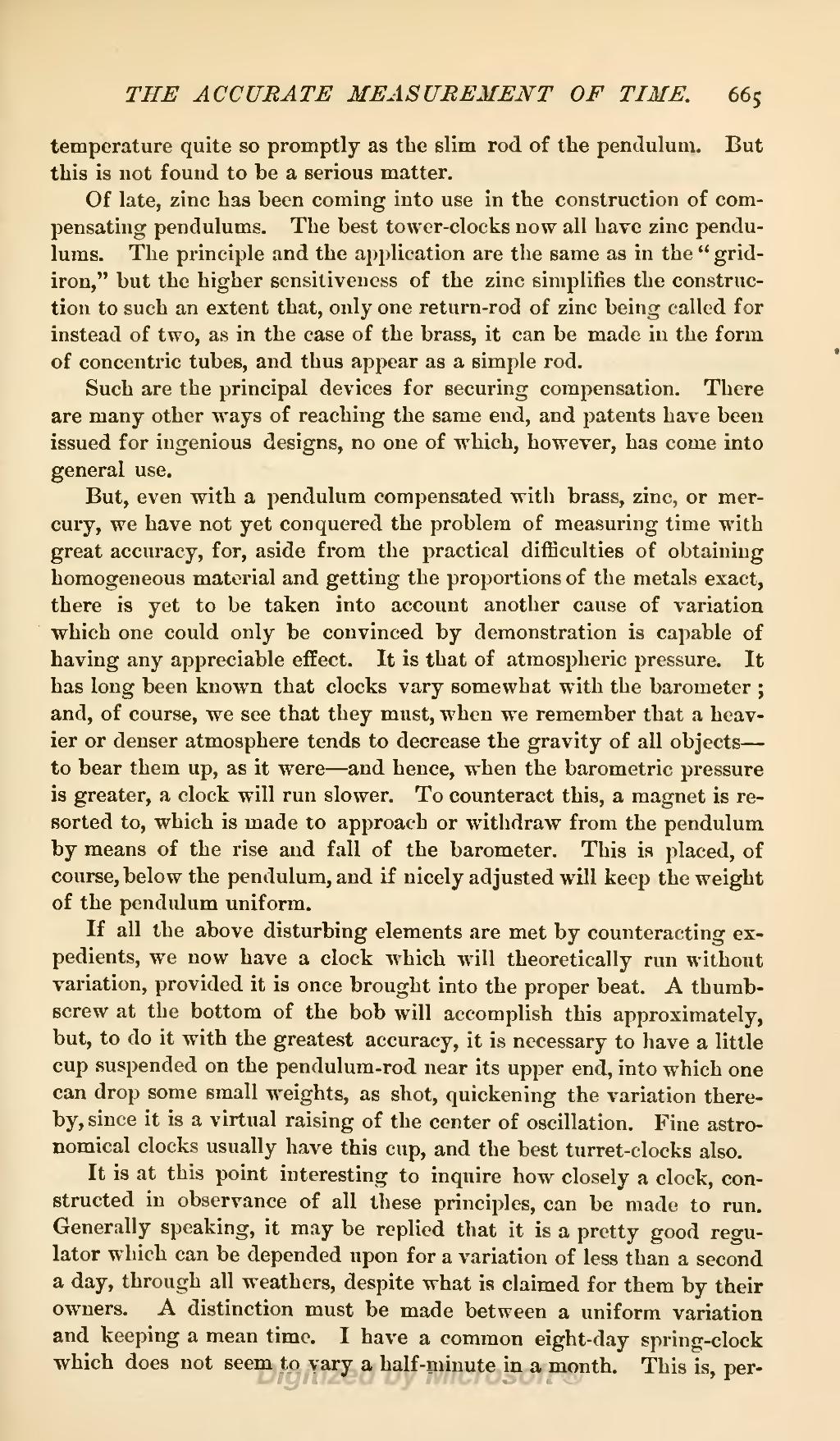temperature quite so promptly as the slim rod of the pendulum. But this is not found to be a serious matter.
Of late, zinc has been coming into use in the construction of compensating pendulums. The best tower-clocks now all have zinc pendulums. The principle and the application are the same as in the "gridiron," but the higher sensitiveness of the zinc simplifies the construction to such an extent that, only one return-rod of zinc being called for instead of two, as in the case of the brass, it can be made in the form of concentric tubes, and thus appear as a simple rod.
Such are the principal devices for securing compensation. There are many other ways of reaching the same end, and patents have been issued for ingenious designs, no one of which, however, has come into general use.
But, even with a pendulum compensated with brass, zinc, or mercury, we have not yet conquered the problem of measuring time with great accuracy, for, aside from the practical difficulties of obtaining homogeneous material and getting the proportions of the metals exact, there is yet to be taken into account another cause of variation which one could only be convinced by demonstration is capable of having any appreciable effect. It is that of atmospheric pressure. It has long been known that clocks vary somewhat with the barometer; and, of course, we see that they must, when we remember that a heavier or denser atmosphere tends to decrease the gravity of all objects—to bear them up, as it were—and hence, when the barometric pressure is greater, a clock will run slower. To counteract this, a magnet is resorted to, which is made to approach or withdraw from the pendulum by means of the rise and fall of the barometer. This is placed, of course, below the pendulum, and if nicely adjusted will keep the weight of the pendulum uniform.
If all the above disturbing elements are met by counteracting expedients, we now have a clock which will theoretically run without variation, provided it is once brought into the proper beat. A thumbscrew at the bottom of the bob will accomplish this approximately, but, to do it with the greatest accuracy, it is necessary to have a little cup suspended on the pendulum-rod near its upper end, into which one can drop some small weights, as shot, quickening the variation thereby, since it is a virtual raising of the center of oscillation. Fine astronomical clocks usually have this cup, and the best turret-clocks also.
It is at this point interesting to inquire how closely a clock, constructed in observance of all these principles, can be made to run. Generally speaking, it may be replied that it is a pretty good regulator which can be depended upon for a variation of less than a second a day, through all weathers, despite what is claimed for them by their owners. A distinction must be made between a uniform variation and keeping a mean time. I have a common eight-day spring-clock which does not seem to vary a half-minute in a month. This is, per-
